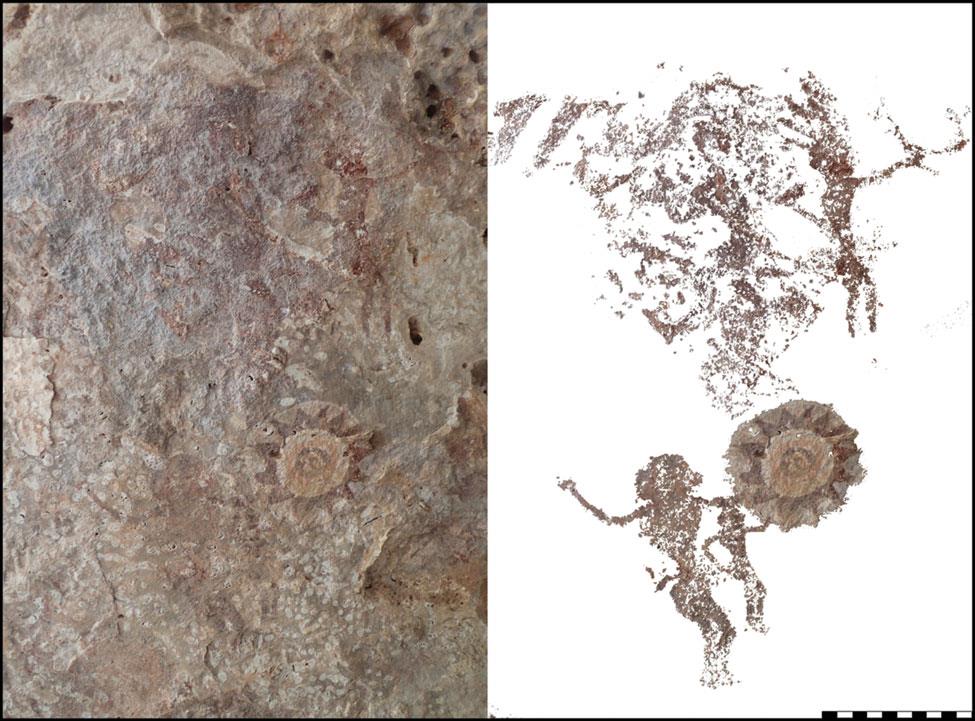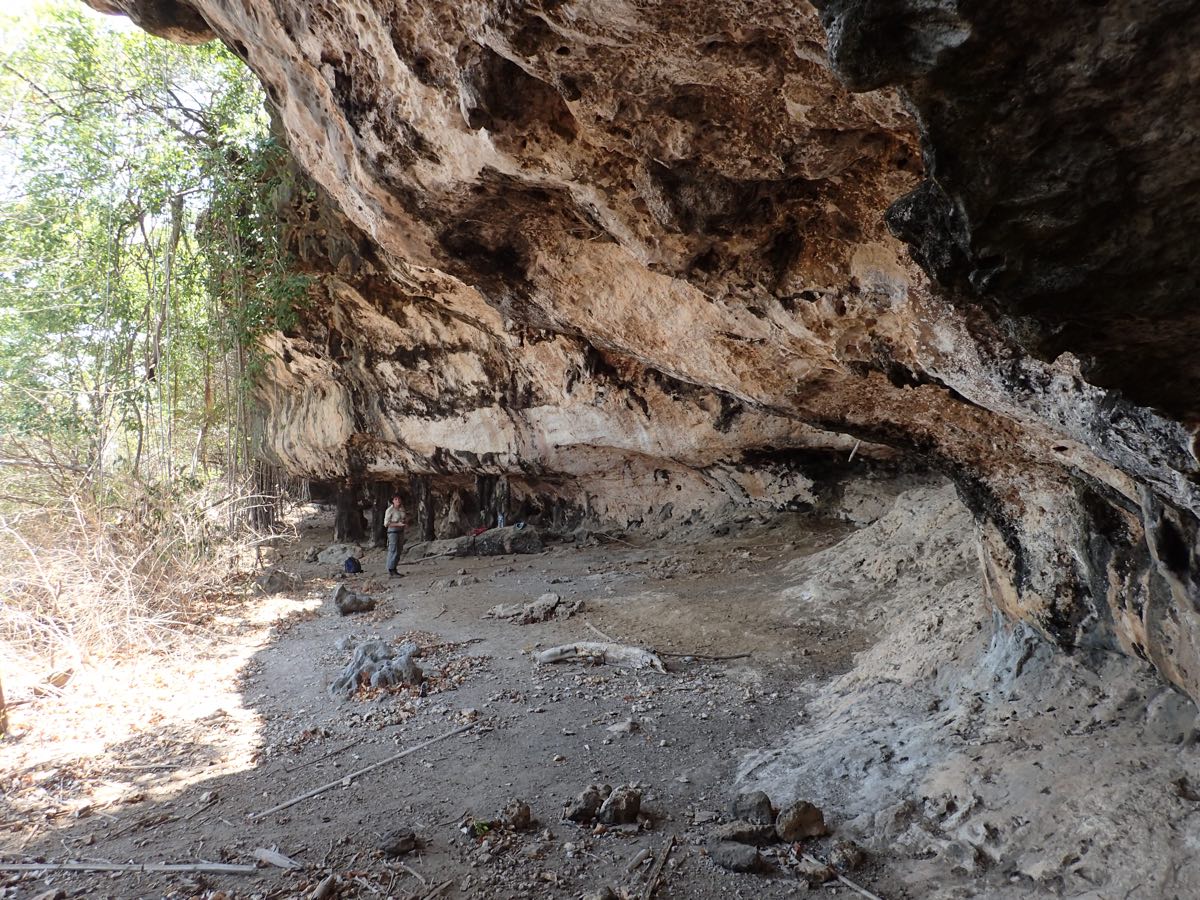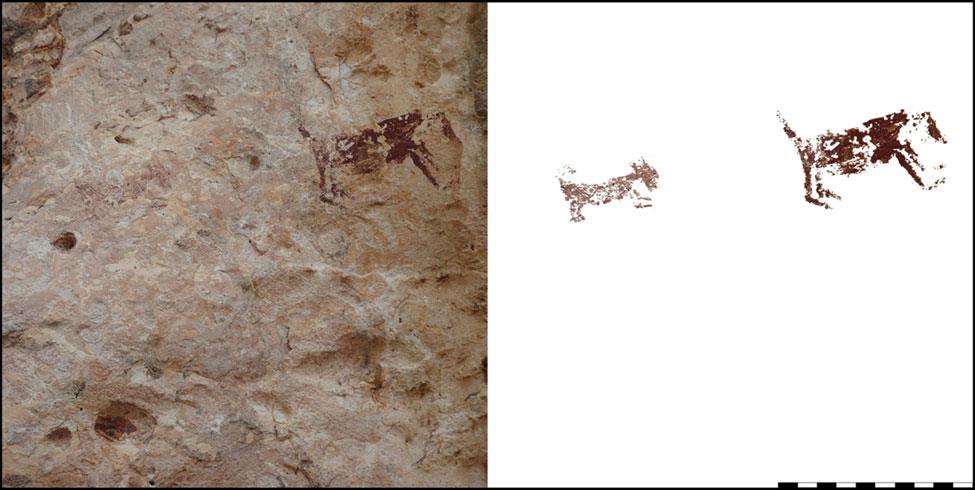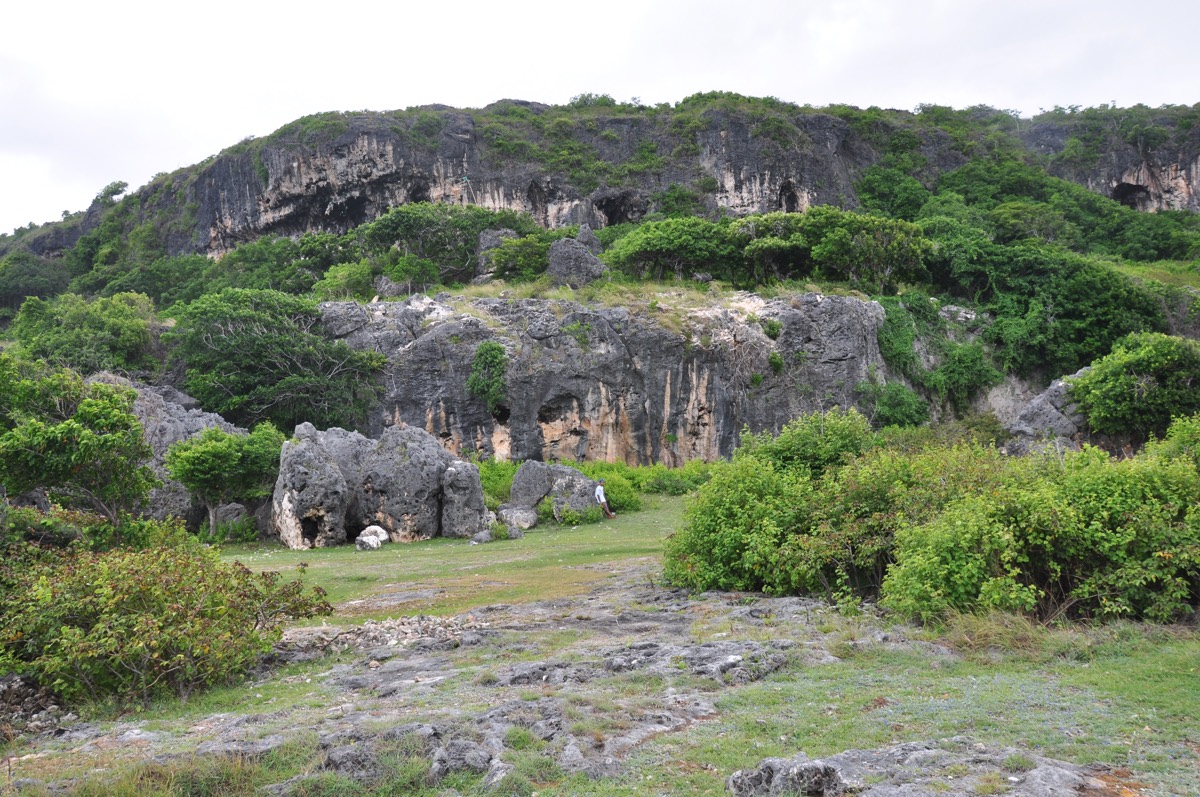Prehistoric Rock Art Found on Tiny Indonesian Island

Looking like a prehistoric art gallery, rock paintings depicting dogs, horses, boats and processions of people decorate the walls and ceilings of limestone overhangs on a tiny island in Indonesia, scientists have found.
Though art lovers may not have visited the gorgeous exhibits in a formal sense, the paintings — most of which were created around 2,500 years ago — may be a sign of the emergence of social elites among the early Bronze Age people of the region. The well-to-do may have acquired their wealth from the trade of such treasures as rare tropical spices or valuable bronze drums.
Archaeologist Sue O'Connor of the Australian National University (ANU) in Canberra led expeditions in 2014 and 2015 to the island of Kisar, one of the Maluku Islands (or Moluccas) at the southern edge of the Banda Sea, known for centuries as the Spice Islands — once the only source of nutmeg, mace and cloves. [See Photos of the Prehistoric Rock Art on Kisar]
"Prior to our work there had been no archaeology done on Kisar," O'Connor told Live Science in an email. While working at archaeological sites in nearby Timor-Leste, part of the large island of Timor, she had become curious whether such a small island could have sustained an early human population.
"We found a few occupation sites, but what really amazed us, following the survey of the island, was how many rock shelters we found with painted rock art," she said.

The researchers found more than 30 rock art sites on Kisar, which has an area of only about 30 square miles (80 square kilometers).
"These are in uplifted limestone terraces [that] form vast overhangs, which are like natural galleries, and the paintings are on the walls and ceilings," O'Connor said.
Sign up for the Live Science daily newsletter now
Get the world’s most fascinating discoveries delivered straight to your inbox.
Rock art
"The paintings are mostly on the smooth pale limestone and are mostly done in red pigment, so they stand out against the white background," O'Connor said.
The rock paintings include small human figures shown in what appear to be processions, carrying weapons and shields, she said. Others show people in boats.
Several types of animals are shown, including horses with riders, chickens and dogs — "placing the painting in the last 3,500 years, as dogs were only introduced [to this region] after that time," she said.
There are also numerous hand stencils, created by outlining human hands with red pigment, which might be much older than the figurative paintings, she said. [8,000-Year-Old Rock Art Includes the World's Oldest Images of Dogs]

Kisar is occupied by villagers who depend mostly on farming and fishing, but until recently it was unexplored by archaeologists, she said. "To get around the island, we used motorbikes, boats or walked, as there are not a lot of roads."
The expedition in 2015 included up to eight researchers at different times from ANU and the University of Gadjah Mada at Yogyakarta in Indonesia, which carried out surveys and excavations around the island, O'Connor said.
Five of the rock art sites on Kisar have now been detailed in research published this month in the Cambridge Archaeological Journal.
Ancient elites
The new research draws attention to similarities between the rock art on Kisar and rock art found on the island of Timor from around the same time. "I think that a new style of art spread very rapidly throughout the islands after about 3,000 years ago," O'Connor said.

"I believe that the introduction of bronze prestige items, which were exchanged or traded, probably in exchange for local forest products — perhaps sandalwood in Timor and spices in Maluku — created a new elite class of those who controlled this wealth, and society became more hierarchical," she said. "I think this [hierarchy] is what we see in the paintings with people in processions."
An important "prestige item" of the time and place would have been the ancient bronze drums found in several parts of Southeast Asia and southern China; they are known as Dong Son drums, named after the site of their first discovery near Hanoi in Vietnam.
"The drums would be an example of prestige metal objects that may have been exchanged with local leaders to secure trading relationships," O'Connor said.
"Today in some islands such as Timor-Leste and Kei (two of the many islands where Dong Son drums have been found), the drums are revered by local villagers and still used in ceremonies and for rites of passage," she said.
"The Dong Son drums found in eastern Indonesia are large with a central raised star on the upper playing surface of the drum, which is very similar to the stars or sun-ray motifs found in the [rock] art in Kisar and Timor-Leste," she said.
"I think that the art is inspired by these new prestige objects and probably tells us that society became more hierarchical after this time," O'Connor said.
Original article on Live Science.
Tom Metcalfe is a freelance journalist and regular Live Science contributor who is based in London in the United Kingdom. Tom writes mainly about science, space, archaeology, the Earth and the oceans. He has also written for the BBC, NBC News, National Geographic, Scientific American, Air & Space, and many others.









